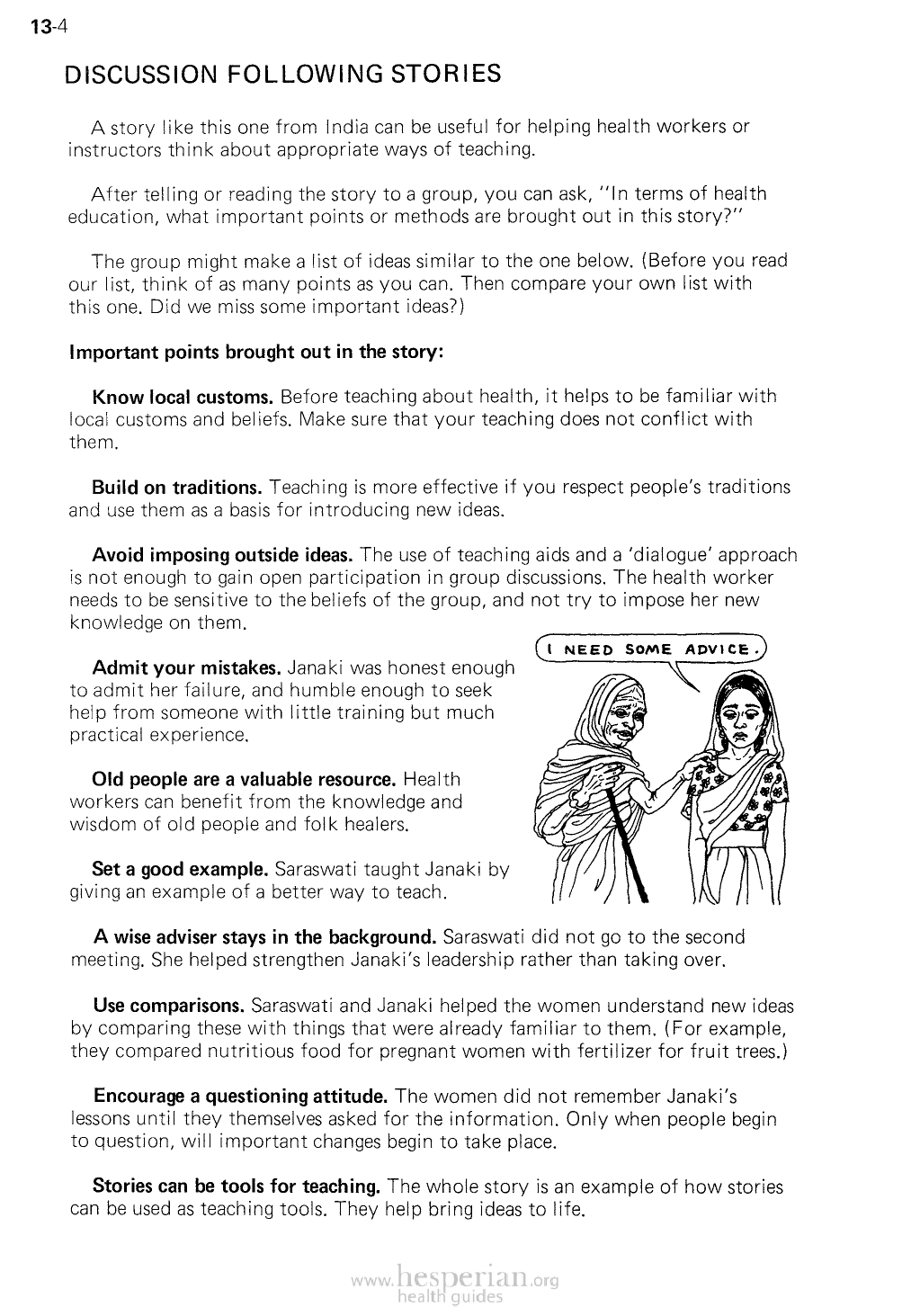
13-4
DISCUSSION FOLLOWING STORIES
A story like this one from India can be useful for helping health workers or
instructors think about appropriate ways of teaching.
After telling or reading the story to a group, you can ask, “In terms of health
education, what important points or methods are brought out in this story?”
The group might make a list of ideas similar to the one below. (Before you read
our list, think of as many points as you can. Then compare your own list with this
one. Did we miss some important ideas?)
Important points brought out in the story:
Know local customs. Before teaching about health, it helps to be familiar with
local customs and beliefs. Make sure that your teaching does not conflict with
them.
Build on traditions. Teaching is more effective if you respect people’s traditions
and use them as a basis for introducing new ideas.
Avoid imposing outside ideas. The use of teaching aids and a ‘dialogue’
approach is not enough to gain open participation in group discussions. The health
worker needs to be sensitive to the beliefs of the group, and not try to impose her
new knowledge on them.
Admit your mistakes. Janaki was honest enough
to admit her failure, and humble enough to seek help
from someone with little training but much practical
experience.
Old people are a valuable resource. Health
workers can benefit from the knowledge and wisdom
of old people and folk healers.
Set a good example. Saraswati taught Janaki by
giving an example of a better way to teach.
A wise adviser stays in the background. Saraswati did not go to the second
meeting. She helped strengthen Janaki’s leadership rather than taking over.
Use comparisons. Saraswati and Janaki helped the women understand new
ideas by comparing these with things that were already familiar to them. (For
example, they compared nutritious food for pregnant women with fertilizer for fruit
trees.)
Encourage a questioning attitude. The women did not remember Janaki’s
lessons until they themselves asked for the information. Only when people begin to
question, will important changes begin to take place.
Stories can be tools for teaching. The whole story is an example of how stories
can be used as teaching tools. They help bring ideas to life.